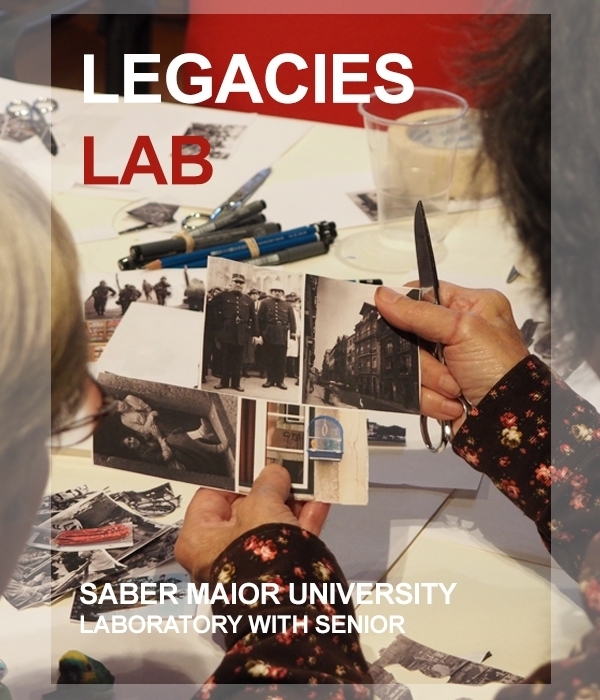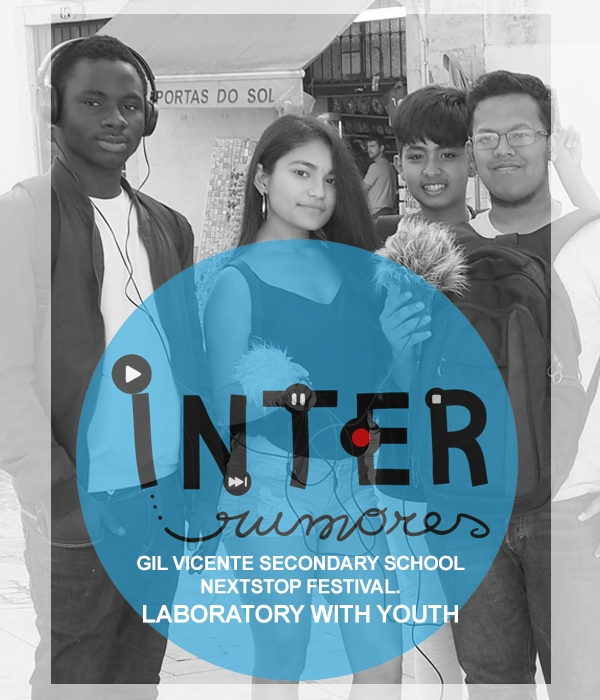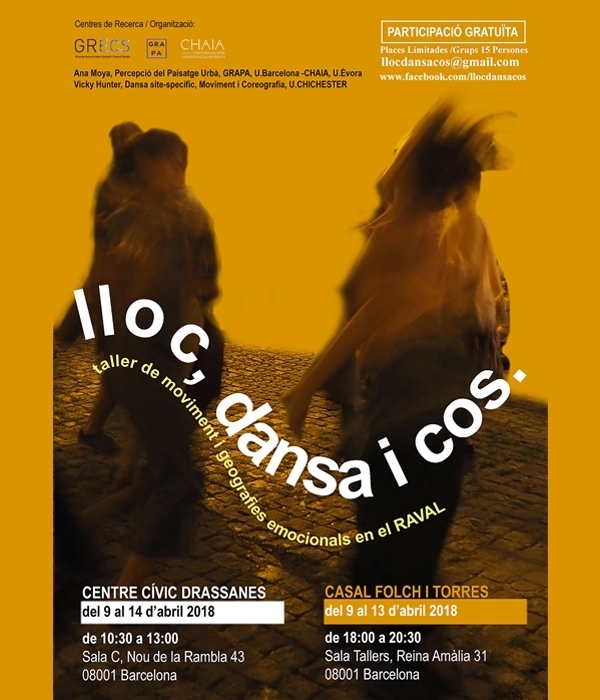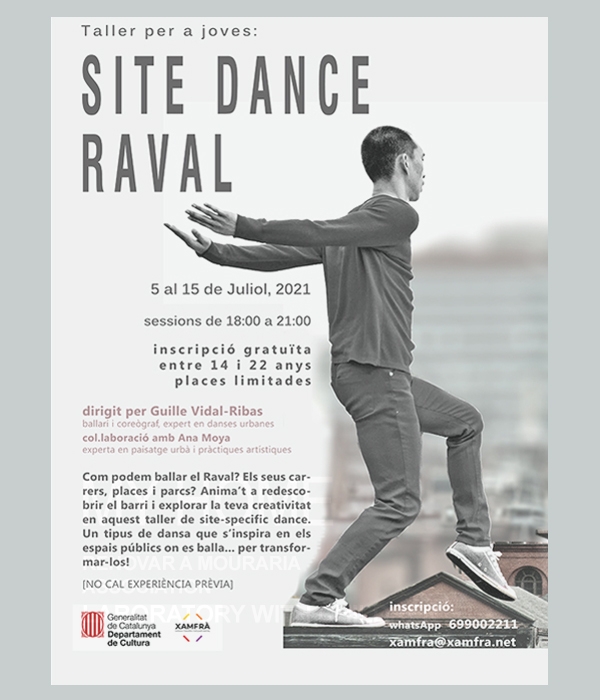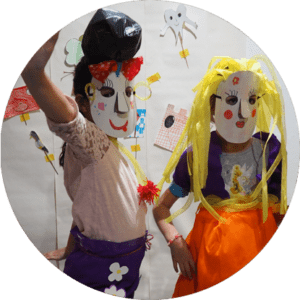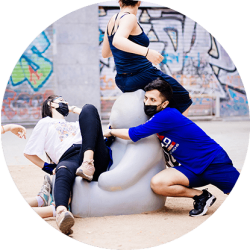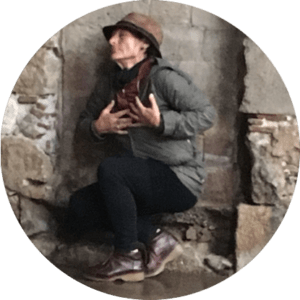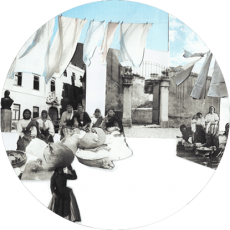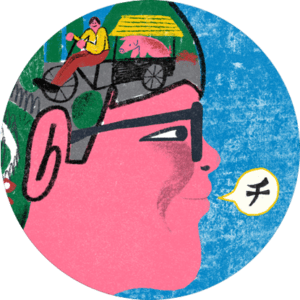community practices
How the community relates to their close urban environment? Our objective is to involve participants in an active experience through artistic activities, involving the full awareness about their emotions, memories and their own body. The urban landscape is, therefore, co-created by the performative potential of their bodies as an essential expressive means of communication that unites their different languages, identities and cultural backgrounds.
pedagogic-artistic methodology
THREE KEY METHODOLOGICAL OBJECTIVES
Community participation
We involve the participation of urban residents for the creation of an artistic work, which gives shape to the individual and collective narratives and stories that define the affective and emotional values of these communities in their urban landscape.
Generational viewpoints
In the urban space, new and old patterns of experience, knowledge and generational interpretation always coexist. The artistic processes and methodological work adapts to the needs and competencies of each generational group.
Creative landscapes
We observe the ritualization of embodied experiences and performances. The expressivity of the body is sustained on the artistic representation, whether it is in the form of plastic arts, sound and musical pieces, or performative and dance ephemeral actions.
THREE CONCEPTS IN THE EMOTIONAL LANDSCAPE PREDICATION
Sense of belonging
We interpret the urban landscape as a “home”, the basis that supports the construction of the inner, subjective, imaginary, emotional and intimate world of the participants. We search for those mental connections of present and absent spaces, geographically close and distant. We analyze present experiences, confronting them with those memories and imaginaries linked to the past, and to cultural heritage.
Re-definition of affects
Searching for emotional bonds with space leads us to the observation of the gestural and performative role of the body in everyday urban situations. We discover which places produce surprise, disgust, anger, fear, sadness or joy, as well as which places bring discomfort, well-being, calm, tension, energy, relaxation or enthusiasm. We also look at those places that present absences, presences and tensions.
Revision of memories
The mapping of the multisensory and emotional experiences of the participants in the urban places generate an intangible heritage. This heritage is created in the present, sustained by the active creation of urban experiences that are corporeal. It is in the synergies, in the communication of affects and emotions, and in the multicultural sharing, that a collective work of inclusion and cultural integration takes place.
THREE MOVEMENTS OF APPROACH TO THE EMOTIONAL LANDSCAPE
Recognise space and place
Personal experiences that take place in space and time define the complexity of spatial phenomena. We are also involved in the development of awareness on the perception and experience of time-space interrelations through itineraries and embodied urban explorations.
Interpret the body in space
Each different Intersection of events, memories, associations and embodied interactions in space imply a different subjective sensorial landscape experience. We raise the participant's awareness about their inner subjective worlds built on body sensations and responses .
Communicate emotions
The communication of an emotional experience with space is interpreted and mapped through our bodies. We document and register this intangible heritage built on places of body participation. All this material has been translated into a language of aesthetic and artistic singularity.
laboratories
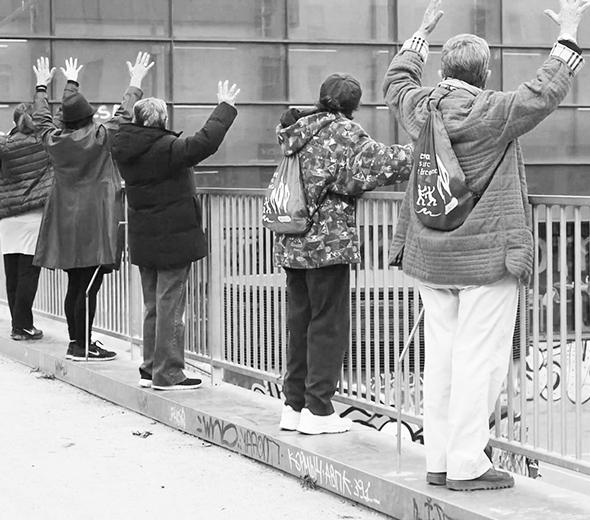
community
participants
Aeesh (8, Nepal), Rojan (8, Nepal), Afonso (7, Portugal), Martim (11, Portugal), Prince (7, Nepal), Tiago (10, Portugal), Samana (10, Nepal), Angel (7, Nepal), Dipensi (11, Nepal), Maycon (12, Portugal), Rafael (11, Portugal), Bruna (7, Portugal), Manswi (11, Nepal), Karina (7, Nepal), Alex (12, Portugal), Kaliany (10, Nepal), Zhihao (15, China), Rong (14, China), Ashish (16, Nepal), Sudhil (16, Nepal), Manswi (12, Nepal), Kriti (13, Nepal), Prekshya (17, Nepal), Prijma (15, Nepal), Sapana (13, Nepal), Bibash (13, Nepal), Sofia (12, Nepal), Priyanka (16, Nepal), Seena (14, Nepal), Kristina (17, Nepal), Mahema (12, Nepal), Dipesh (19, Nepal), Shristi (14, Nepal), Prayash (15, Nepal), Samiur (12, Bangladesh), Tangilá (16, Bangladesh), Abidul (15, Bangladesh), Fokrul (18, Bangladesh), Suraj (12, India), Karan (14, India), Rohit (18, India), Lalit (15, India), Michele (17, Philippines), Mariana (14, Romania), Lamarana (16, Guinea), Ousmane (16, Guinea), Huy (13, Vietnam), Emmanuel (13, Nigeria), Khoudia (19, Senegal), Malick (16, Senegal), Milan (15, France), Sofía (23, Galicia, Spain), Helena (24, Vasc Country, Spain), Maria (25, Catalonia, Spain), Ana Luisa (34, Portugal), Jordi (43, Catalonia, Spain), Brigitte (50, Catalonia, Spain), Sheri (50, England), Francesca (63, Madrid, Spain), Assumpta (66, Catalonia, Spain), Amparo (75, Castile La Mancha, Spain), Ana María (76, Castile and León, Spain), Azucena (79, Valencia, Spain), Emilia (81, Cantabria, Spain), Emérita (82, Galicia, Spain), Nuno (58, Portugal), Francisco (61, Portugal), María do Rosário (65, Portugal), Isilda (69, Portugal), Alice (70, Portugal), Maria (73, Portugal), Celeste (73, Portugal), Diamantina (78, Portugal), Adelina (78, Portugal), José (80, Portugal), Justina (80, Portugal), Conceição (50, Portugal), Rania (18, Morocco), Narjiis (19, Morocco), Hind (25, Morocco), Ona (15, Catalonia, Spain), Henry (17, Ghana), Dana (17, Ghana), Yasmin (15, Catalonia, Spain), Faria (16, Catalonia, Spain), Jean Pierre (24, Peru), Alexandra (21, Peru).
collaborations
Cultural/artistic associations, public institutions, free lancers, volunteers and the residents of Raval and Mouraria neighbourhoods.
Promotion: Filipa Bolotinha (Vice-director A Renovar a Mouraria), Ana Duarte (Director Gil Vicente), Anabela Monraia (Social Entrepreneuship Office, Sta Maria Maior), Marta Silva (Director Largo Residências), Ester Bonal (Director Xamfrà). Organization and Management: Almudena Ferro (A Renovar a Mouraria); Conceição Telles, Carla Neto, Carla Teixeira (Teachers at Gil Vicente); Marisa Moura (Coordinator Saber Maior); Ana Jaleco, Raquel Fernandes (Executive direction and production Largo Residências); Estefania Soler (Xamfrà). Field Work Volunteers: Isabel Serodio, Rita Correia, Ana Margarida Brito, Inês Passos, Alex Gama (A Renovar a Mouraria); Khaled Berdi (Saber Maior). Technical, Audiovisual work and Logistics: Priscilla Barbosa (Renovar a Mouraria), José Costa (Largo Residências), Florence Girardeau (audiovisuals, camera, video editing and web design), Laura Abad (photography), Marta Romero (camera and video editing). Special thans to: Adriana Freire (Director Cozinha Popular da Mouraria), Stefano d’Argenio (INCA Catalunya), Felipe Ibarra (Ateneu del Raval), Mireia Aranda (Tot Raval), Ana Luisa Sousa (Opá, Associació Lusófona), Sheri Masala (Centro Bollywood Masala, BCN), Elisenda Guardiola and Gemma Andreu (Servei de Proximitat i Veïnatge de Ciutat Vella), Joan Cabot (St Pau del Camp Monastery), Sandra Jurado (Median T la Danza).
Close partnership with:

Special thanks to:

